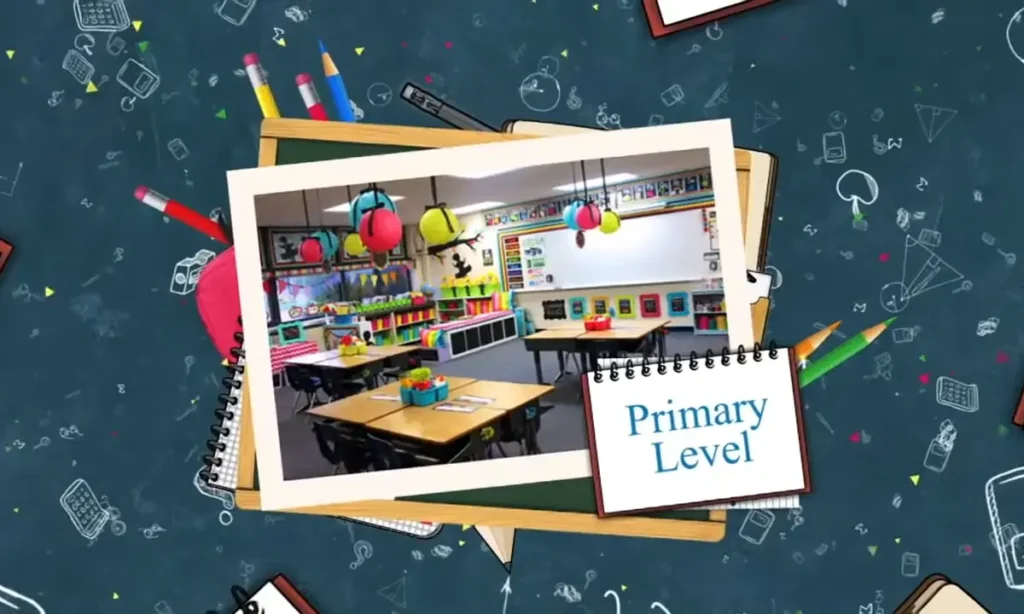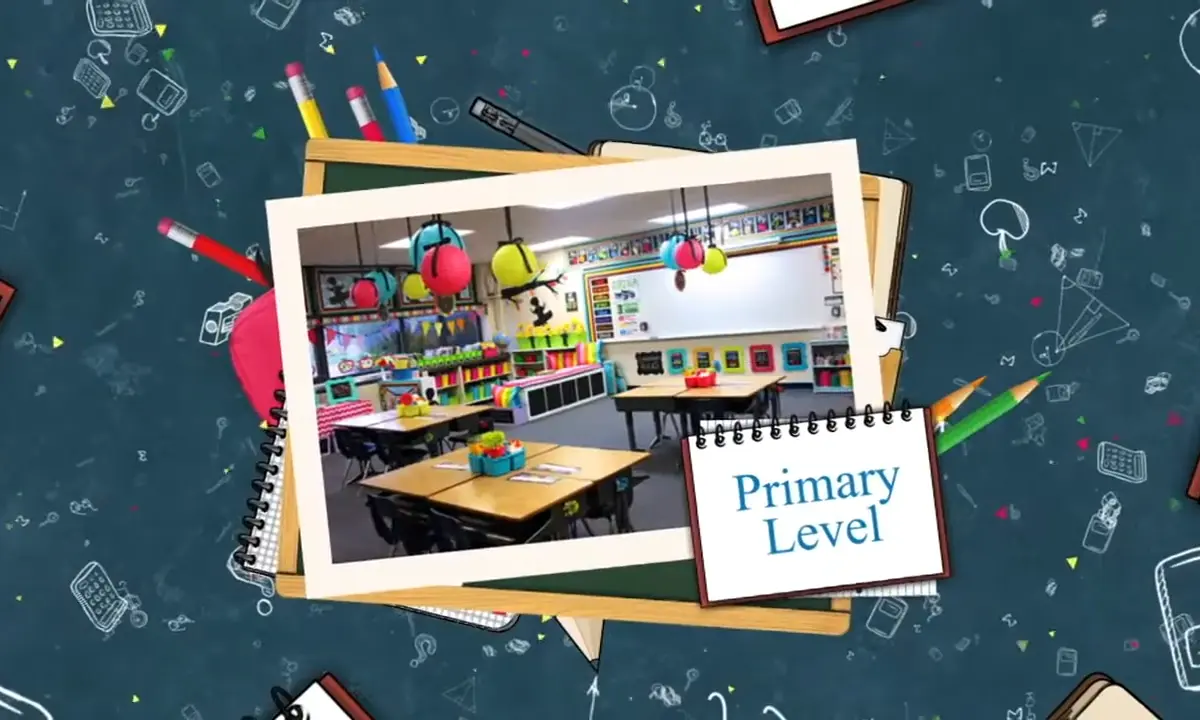Primary education is the first stage of formal education and is compulsory for children in Pakistan. It plays a crucial role in shaping a child’s future by laying the foundation for further education. This stage typically covers grades 1 to 5, with children between the ages of 5 and 10 years attending these schools.
In Pakistan, primary education can be found in public, private, and religious schools, offering different learning experiences and resources. To better understand the differences and benefits of each type, you can refer to our detailed article on Private vs Public Primary Schools in Pakistan. This will assist you in choosing the right educational path for your child.
Let’s explore the benefits, types, and challenges of primary education in Pakistan and what you need to know to select the right school for your child.

What are the Benefits of Primary Education in Pakistan?
Primary education is the foundation for a child’s future learning. Here are some of the main benefits of primary education in Pakistan: To understand how it fits into the broader educational landscape, check out article on Education in Pakistan.
- Builds Basic Skills: Kids learn how to read, write, and solve math problems, which helps them in higher classes.
- Develop Social Skills: Children learn how to interact with others, make friends, and work in teams.
- Improves Critical Thinking: Kids are encouraged to ask questions, think for themselves, and find answers.
- Promotes Discipline: They learn how to follow rules, be on time, and finish their homework on schedule.
- Grows Confidence: Primary education helps children believe in themselves and their abilities, which makes them ready for bigger challenges.
What is the Best Age for Primary Education for Your Child?
The best age for a child to start primary education in Pakistan is generally 5 years old. At this age, children are mentally and physically ready to start learning basic subjects like mathematics, language, and science.
Starting at the right age ensures that children can progress through the educational system at a steady pace without feeling overwhelmed.
What is the Role of Pre-nursery and Kindergarten
Before formal primary education, many children attend pre-nursery classes (also called playgroups) and kindergarten. These classes are usually for children between 2 and 4 years old.
The purpose of pre-nursery and kindergarten is to introduce children to the school environment and provide early learning opportunities through play-based activities.
In these classes, children develop:
- Social skills by interacting with their peers.
- Basic motor skills through activities like drawing and playing.
- Early literacy and numeracy skills, such as recognizing letters and numbers.
These early experiences in pre-nursery and kindergarten help children adjust to the more structured environment of primary education, making the transition smoother and less stressful.
How Many Types of Primary Education are in Pakistan?
In Pakistan, there are four main types of primary education, each with its features: To gain insights into the initiatives aimed at improving literacy across these types, visit our detailed article on Literacy Initiatives in Pakistan: Strategies, Challenges, and Future Solutions.
Public Schools
Public schools are funded and run by the government. These schools are free of cost and cater to a large number of students, especially those from low-income families. Public schools follow the national curriculum, and the medium of instruction is usually Urdu.
Private Schools
Private schools are funded by private organizations or individuals. These schools offer higher-quality facilities and smaller class sizes compared to public schools, but they are more expensive. Many private schools use English as the medium of instruction, and they often offer international curriculums.
Religious Schools
Religious schools, also known as madrassas, focus on religious education, particularly Islamic teachings. While some madrassas also include subjects like mathematics and science, their primary focus is on the Quran and Islamic studies. These schools are usually free or charge minimal fees.
Self-help Schools
Self-help schools are community-based schools that are set up by local communities or non-governmental organizations (NGOs). These schools aim to provide education to children who may not have access to public or private schools due to distance or financial constraints.
What are the Advantages and Disadvantages of Private Primary Schools?
Advantages
- Better Infrastructure: Private schools typically have better facilities such as libraries, computer labs, and playgrounds.
- Smaller Class Sizes: This allows for more individual attention from teachers.
- Higher Academic Standards: Private schools often have higher academic expectations and may follow international curriculums.
- Use of English Medium: Most private schools in Pakistan use English as the primary language of instruction, which can provide an advantage in global job markets.
Disadvantages
- High Fees: The cost of private education is much higher than public or religious schools, making it unaffordable for many families.
- Pressure on Students: The academic expectations in private schools can sometimes lead to stress and pressure on students.
- Lack of Regulation: In some cases, private schools may not be as well-regulated as public schools, leading to variations in quality.
What is the Difference Between English Medium and Urdu Medium Primary Schools in Pakistan?
English medium schools in Pakistan use English as the primary language of instruction, especially in subjects like science and mathematics. These schools are mostly private and are considered to offer a better standard of education because of the global importance of the English language.
Urdu medium schools, on the other hand, use Urdu as the main language for teaching. Most public schools in Pakistan are Urdu medium, and while they provide affordable education, students from these schools may face challenges when pursuing higher education or careers that require proficiency in English.
How many children are out of primary school in Pakistan?
About 19% of Pakistan’s children don’t attend primary school. This means almost one out of every five kids misses out on important education.
Some families can’t afford school, or the schools are too far away. There might also not be enough teachers or classrooms. Because of this, many children can’t learn and grow like they should.
What Qualifications are Needed for Primary Teachers in Pakistan?
To become a primary school teacher in Pakistan, individuals usually need a Bachelor of Education (B.Ed.) or a Bachelor’s degree in a relevant field. Many teachers also pursue professional teaching diplomas or certificates to enhance their skills. The key qualifications include:
- A Bachelor’s degree or Diploma in Education.
- Certification from the Provincial Education Department.
- Strong knowledge of child development and teaching methods.
How Do Teaching Methods Vary in Pakistan’s Primary Schools?
Teaching methods in Pakistan’s primary schools can vary depending on the type of school. In public schools, the teaching approach is often more traditional, with a focus on memorisation and written tests.
In private schools, teachers may use more interactive methods like group discussions, presentations, and hands-on activities. Religious schools emphasize memorisation and understanding of religious texts, while self-help schools often use a combination of local knowledge and informal teaching methods to suit the needs of their communities.
What are the Main Primary Education Boards in Pakistan?
In Pakistan, different educational boards are responsible for overseeing the curriculum and examination processes in schools. The main boards include:
| Board | Region | Responsibility |
| Federal Board of Intermediate and Secondary Education (FBISE) | Nationwide, mostly for federal schools | Responsible for public and private schools under federal jurisdiction. |
| Punjab Examination Commission (PEC) | Punjab | Conducts exams and oversees schools in the Punjab region. |
| Sindh Education and Literacy Department | Sindh | Oversees education in Sindh, including curriculum setting. |
| Khyber Pakhtunkhwa Examination Board (KPEB) | Khyber Pakhtunkhwa | Manages exams and school performance in Khyber Pakhtunkhwa. |
| Balochistan Education Department | Balochistan | Responsible for managing schools in the Balochistan region. |
These education boards ensure that schools across Pakistan follow the national curriculum and maintain standardized testing procedures. Each board is tasked with managing schools in its respective region and ensuring that students receive a quality education that meets national standards.
You May Also Like:
- Best Montessori Schools in Lahore
- 19 Best Schools in Faisalabad
- Top Montessori Schools in Faisalabad
- Best Montessori Schools in Rawalpindi
- Best Montessori Schools in Karachi
- Best Montessori Schools in Peshawar
- Best Montessori Schools in Multan
- 6 Best Montessori Schools in Islamabad
Conclusion:
primary education in Pakistan is a vital part of the educational system, providing children with the foundational skills they need for future success.
By understanding the different types of schools, the advantages and disadvantages of private education, and the qualifications needed for teachers, parents can make informed decisions about their child’s primary education.
Whether choosing an English medium or Urdu medium school or considering public vs. private options, it’s important to prioritise the needs of your child to ensure they receive the best possible education.

